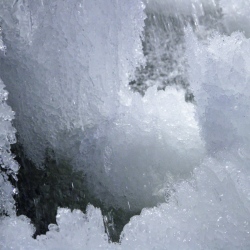
Recorded human history has played out within one type of climate, an interglacial period. During the glacial periods of the last million years (commonly referred to as “ice ages”), great ice sheets grew to cover Canada and some points south, as well as Northern Europe and much of Russia.
In the 1970s, we learned there was a consistent 100,000-year heartbeat to this back-and-forth cycle governed by subtle patterns in Earth’s orbit. The thing is, it’s about time for the next heartbeat. We’re at the part of the cycle where the interglacial period should be wrapping up and the slow but inexorable descent into another ice age would begin.
But that hasn’t happened, and it’s not going to any time soon. Our current breakneck emissions of greenhouse gases will see to that. Still, the scientific question is worth asking: what, exactly, does it take to start off an ice age?
We are currently at a low point in summer sunlight reaching the northern high latitude region, which is how the orbital cycles turn into glacial cycles. Because there are several orbital cycles involved, the peaks and valleys in that sunlight are complex, it’s not as simple as a sine wave oscillating between a constant high and a constant low.
It’s possible humans were responsible for higher CO2 concentrations even before the industrial revolution. There’s a debate among climate scientists about whether the advent of agriculture and deforestation had a significant impact thousands of years ago, forestalling the beginning of an ice age as a result.
Whether or not humans were responsible for CO2 being slightly too high, there’s another interesting implication. With CO2 at 280 parts per million, the next opportunity to cross into an ice age is about 50,000 years away in the models. That would make the present interglacial period longer than any in the last million years.
That is, however, somewhat academic given our current massive-scale experiment with the climate system. To investigate more relevant scenarios, the researchers ran simulations of three futures: one in which we basically stop emitting CO2 now, one in which we emit double what we have so far, and one where we triple it. (If we do nothing to reduce emissions, we’ll hit quadruple by the year 2100.) In the low-emissions scenario, we skip any real ice sheet growth for at least 50,000 years.
In the high-emissions scenario, there’s basically no chance of dropping into any kind of ice age within the next 100,000 years, which was as long as the simulations ran. That’s because it takes a very long time for CO2 concentrations to naturally decline.
Most of these conclusions have been reached by one or another study in the past, but the sunlight/CO2 relationship that sets the ice age threshold is new, and shows how close we came in the last few millennia. Since people are often naturally curious about the future of the ice age cycle, the reality bears repeating: we broke it.
